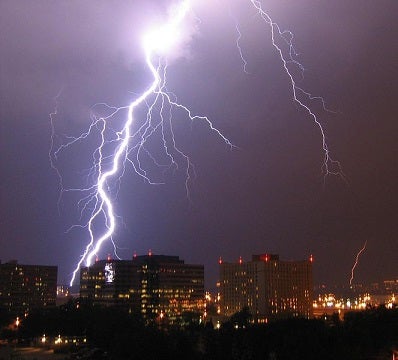Resiliency+: Distributed Generation and Microgrids Can Keep Lights On During the Next Storm
Resiliency+ is a new blog series, which highlights the ways in which different clean energy resources and technologies can play an important part in increasing energy resiliency in New Jersey and around the country. Check back every two weeks, or sign up to receive Energy Exchange blog posts via email.

Unlike large, centralized power plants, distributed generation and microgrids create electricity on or near the premises where it can be primarily used. Solar panels on rooftops, for example, are a form of distributed generation: they create electricity that can be used in the same location where the renewable energy is generated. Microgrids are similar – systems that serve a specific energy consumer, such as university campuses, with on-site energy generation that can operate both independently from (i.e. ‘islanded’) and connected to the larger energy grid.
A National Renewable Energy Laboratory (NREL) study found that distributed generation and microgrids, “are integral to energy resiliency.” With the right enabling technology, distributed generation and microgrids have the potential to ‘island’, meaning that they can function separately from the main electricity grid. In other words, in the aftermath of a storm or during a blackout, distributed generation and microgrids are able to keep power running. The importance of this technology cannot be understated. Without it, electricity that has the potential to work during a system-wide blackout – like solar power or energy storage – will be rendered powerless. Distributed generation and microgrids provide the pathway for these clean energy resources to function during and after a natural disaster.
Distributed generation and microgrids have a number of other important benefits as well. Operationally, these technologies allow electricity to be used more efficiently. That’s because the energy produced by these systems does not have to be transported hundreds of miles over inefficient power lines to its end users (a process which accounts for nearly seven percent of our electricity system’s energy loss). Environmentally, distributed generation and microgrids can help to reduce the negative impacts of transmission and distribution on our land and water by decreasing the infrastructure needed to transfer energy from centralized power plants to homes and businesses.
Distributed generation and microgrids provide another important benefit by decentralizing power where clean energy solutions (like solar power, wind power, and energy storage) can be sited. These resources are logical choices to power distributed generation and microgrids. By unlocking this value proposition, distributed generation and microgrids can thus incentivize the deployment of clean energy resources.
Distributed generation and microgrids have the potential to significantly improve New Jersey’s electricity grid and help the state in reducing the negative impacts of a future disaster. The state has proposed steps to achieve these benefits, which it outlined in an Action Plan that details how New Jersey will spend federal Sandy relief funds.
This Action Plan lays the groundwork for an Energy Resilience Bank, which would help fund greater use and deployment of distributed generation and microgrids. The Action Plan notes the success of distributed generation, saying it proved “extremely resilient following Superstorm Sandy” and gives the example of Bergen County Utilities Authority, which was able to keep its sewage treatment facilities operational thanks to the technology. The NREL study found a number of facilities in New Jersey primed for distributed generation and microgrids, including more than 200 schools, wastewater treatment facilities, communications centers, and hospitals.
The state’s Action Plan left no question as to the role of distributed generation and microgrids in boosting energy resiliency, stating that distributed generation “is less reliant on liquid fuel supply and availability, has longer continuous run times, and has less environmental impacts.” These benefits are crucial for energy resiliency in limiting the damage caused by future disastrous weather events in New Jersey and nationwide.











2 Comments
This highlights the ways in which different clean energy resources and technologies can play an important part in increasing energy resiliency in New Jersey and around the country. To prevent long-term power outages, mobile DG technologies (e.g., trailer mounted gas turbines and reciprocating engines) need to be deployed to help get power to customers quickly by providing emergency/bridge power before the grid is fully restored.
Thank you for taking the time to read our post and comment. EDF is certainly interested in all clean energy technologies that promote resilience.